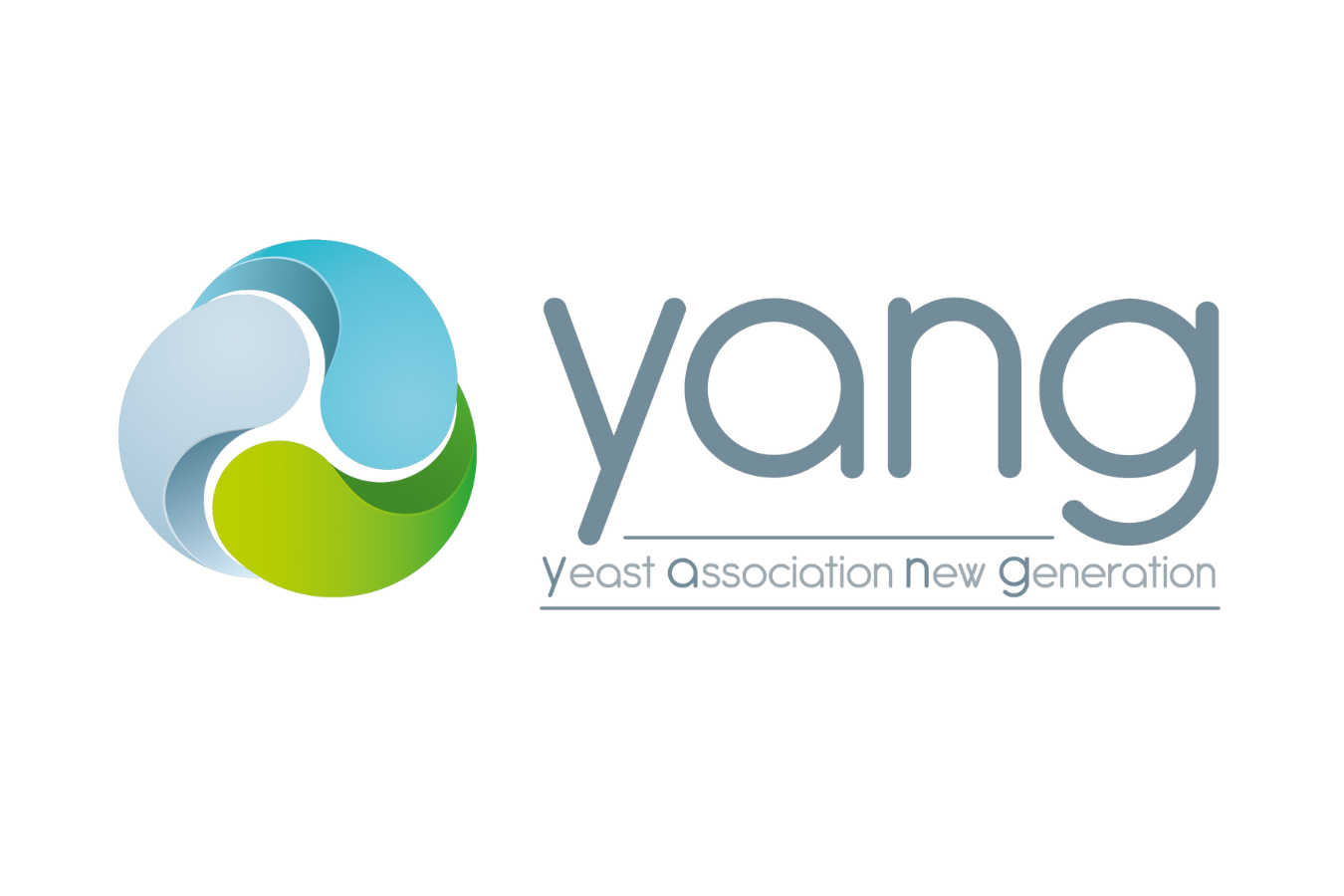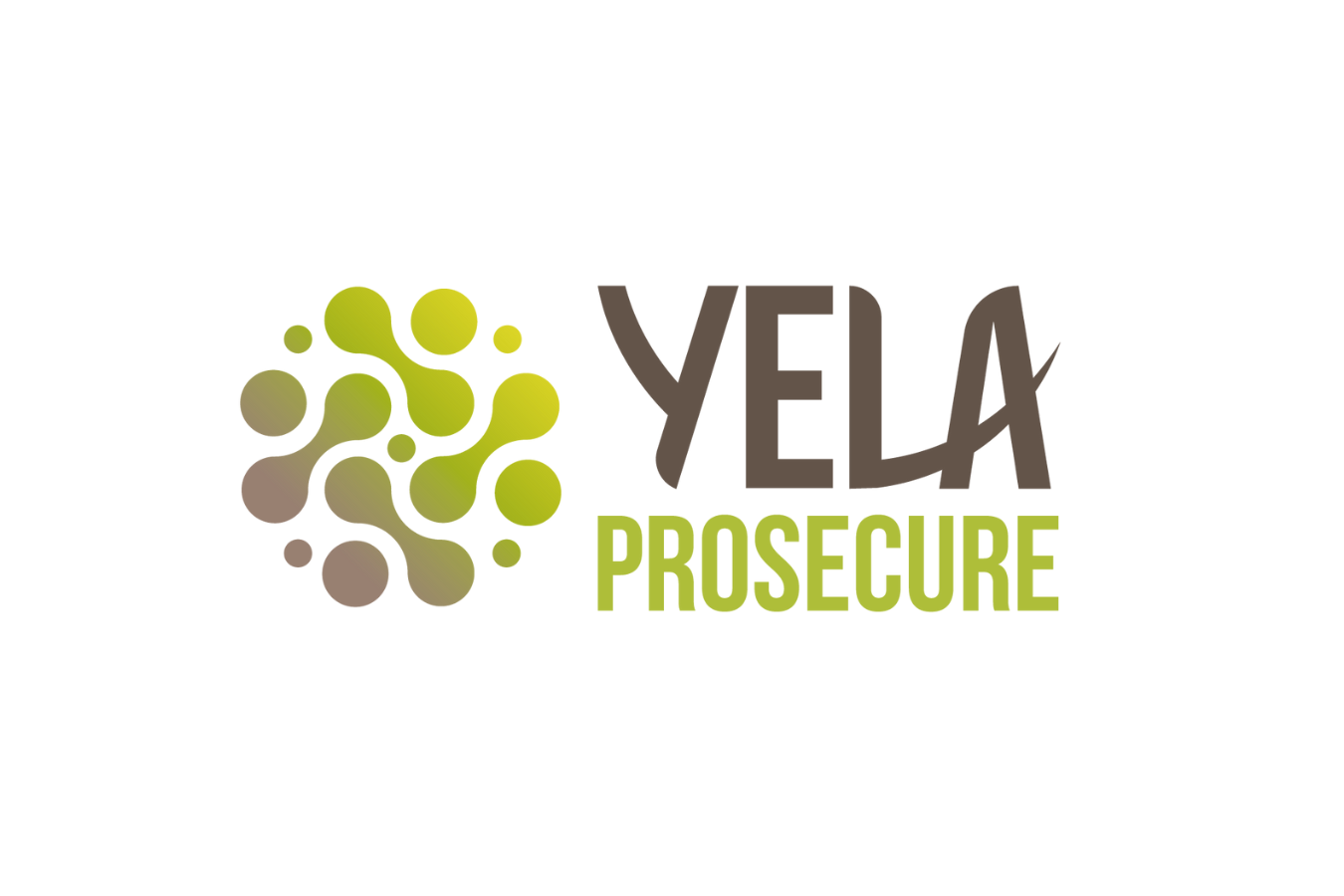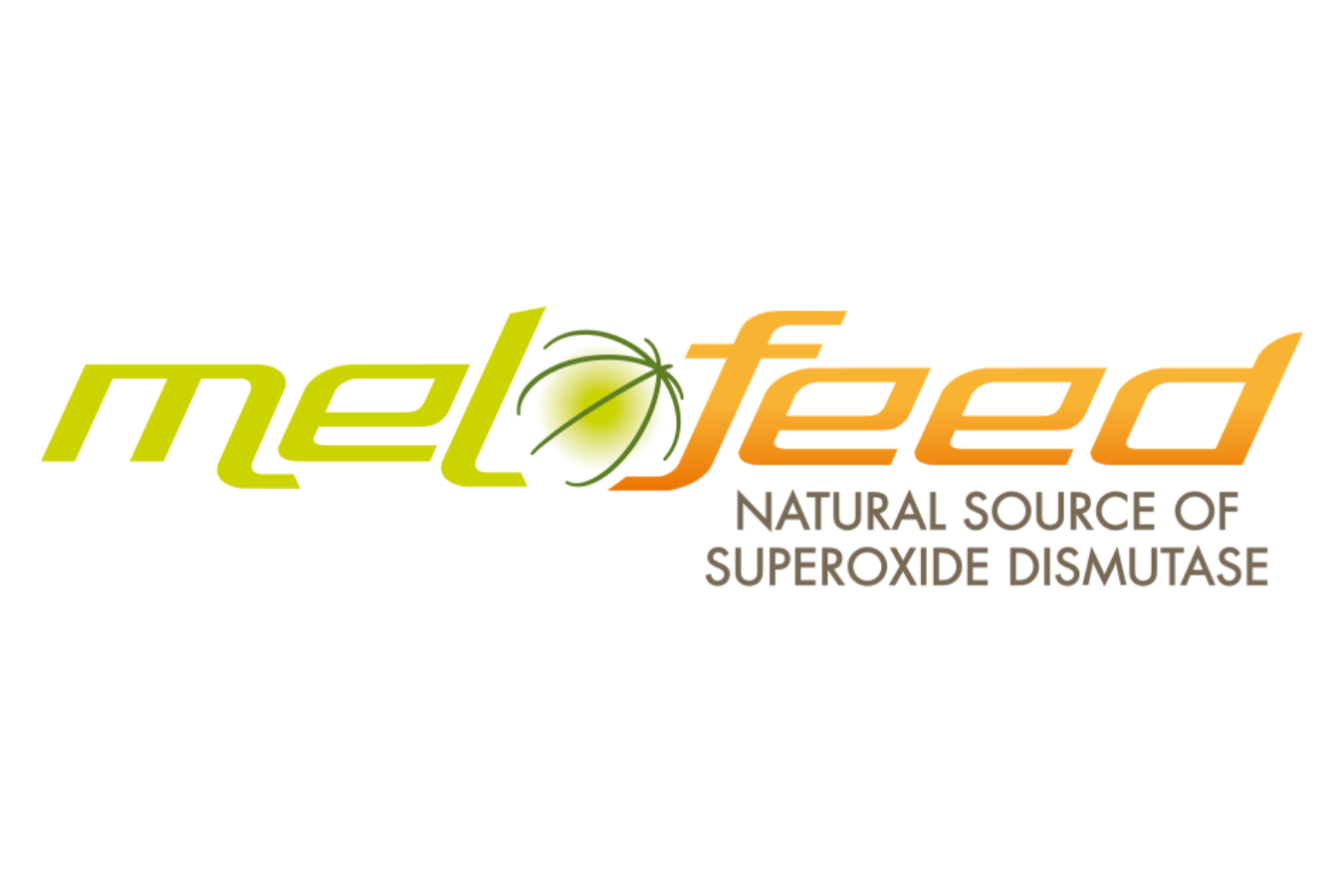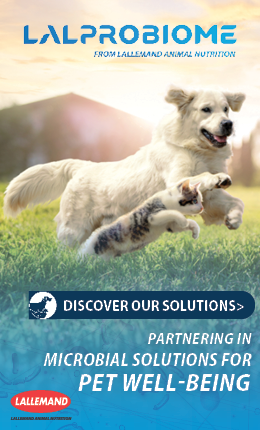
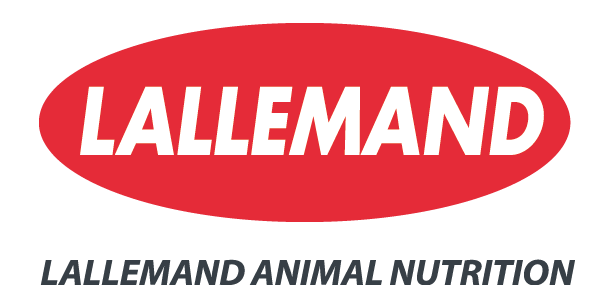
Lallemand Animal Nutrition
https://lalprobiome.lallemandanimalnutrition.com/en/rest-of-the-world
Lallemand Animal Nutrition
About the company
Lallemand Animal Nutrition – a global leader in the science of fermentation – is a primary producer of yeast and bacteria mastering all the steps of the production processes from the strains selection, to ensuring product quality, consistency, safety and efficacy.
LALPROBIOME is Lallemand Animal Nutrition’s platform of unique microbial solutions specifically dedicated to optimize companion animals health and well-being.
Leveraging the natural power of yeast and bacteria, LALPROBIOME provides a wide range of innovative microbial solutions aligned with the evolving trends of the companion animals market and the increasingly demanding expectations of the companion animals owners. LALPROBIOME offers better nutrition using cutting edge science and provides tailor-made services ensuring top-tier quality management systems and unparalleled flexibility.
Products
Company News
 Other microingredients
Other microingredients
5+ MIN
05/08/2025
The Gut-Skin Axis: A Postbiotic Strategy
The Gut Barrier
The gut barrier relies on specialised epithelial cells, the generation of protective mucus, and tight junctions to:
Facilitate nutrient absorption and digestion,
Regulate immune responses,
Support microbial balance within the intestine,
Protect the body from any ingested threats.
The three gut barrier layers (Figure 1): the microbiological barrier (microbiome), the chemical barrier (mucous layer), and the physical barrier (intestinal epithelial cells) require continuous regeneration to maintain their integrity against constant pressures. Factors like poor nutrition, infection, or illness can compromise gut barrier integrity, leading to increased 'intestinal permeability,' which can cause inflammation, food allergies, nutrient malabsorption, a compromised immune system, and disease (Wells et al., 2017).
Figure 1. Schematic representation of the main components of the gut barrier, adapted from Vancamelbeke & Vermeire, 2017 and Samaxmi et al., 2023.
The Skin Barrier
Like the gut barrier, the skin is also a complex organ with multiple layers, each serving a unique function. Its microbiota is a dynamic community of trillions of bacteria, yeasts, fungi, viruses, and other microorganisms residing within the epidermis, dermis, and associated glands and follicles. This community's balance evolves constantly, influenced by the host and environment. Research shows a close relationship between the skin's physical, immunological, and biological properties and its microflora. Several skin conditions, from dry and aging skin to inflammatory issues like atopic dermatitis, psoriasis, and acne, are linked to alterations in the cutaneous microbial ecosystem (Elias & Choi, 2005).
Like the gut, the skin uses various defense mechanisms to protect against infection, including physical integrity and regulation of pH. Healthy skin typically has a slightly acidic surface pH, creating an unfavourable environment for pathogenic bacteria (Chikakane & Takahashi, 1995). The skin and its microbiome produce antimicrobial peptides (AMPs) that target skin pathogens. Antibiotics are commonly used for skin conditions but can disrupt the skin's microflora and the gut if taken orally (Gallo & Nakatsuji, 2011). The skin's innate immune system collaborates with the cutaneous microbiota to act as a barrier against pathogens. It differentiates between probiotics and pathogens, triggering pathways to reduce inflammation and stimulate the production of anti-inflammatory cytokines and chemokines, as well as natural AMPs (Wang et al., 2012; Lew & Liong, 2013).
Traumatic or surgical wounds compromise skin integrity and function. Efficient skin care is essential to restore the skin to its physiological state and limit secondary infections. Factors like metabolic conditions, temperature, stress, and nutrition impact skin health. The wound healing process, conserved across vertebrates, aims to produce tissue at the injury site that resembles existing tissue and protects the body. There are three major stages of wound healing:
Figure 2. The three stages of wound healing from a penetrative skin wound.
Microbial Interventions for Skin
Microbials are increasingly utilised in human skin health products to modulate cutaneous microflora, support lipid barrier function, and enhance the immune system to maintain homeostasis (Cinque et al., 2011). In addition to topical applications, the beneficial effects of orally administered bacterial and/or yeast-based solutions have also been demonstrated, likely mediated through the gut–skin axis: a bidirectional communication pathway linking gastrointestinal and dermal health.
Interestingly, recently scientists have been able to prove that microbes don't necessarily need to be alive to be effective (Kataria et al., 2009).
The Gut-Skin Axis in Action
The gut-skin axis reflects the relationship between the gut and skin, often reflecting the integrity and health of each barrier system. It is a bidirectional interaction, controlled by the immune system and influenced by gut microbiome metabolites. The postbiotic yeast YANG, made of three specifically selected yeast fractions with synergistic properties, has been used as an in-feed treatment for skin health and wound healing in a zebrafish model. Macroscopic evaluation of wound healing closure was significantly more advanced at 16 days post-wound (dpw) in the YANG-fed group compared to the control group, meaning YANG promoted a quicker onset of wound closure and faster tissue rebuilding.
Figure 3. Macroscopic wound closure evaluation of a 3mm biopsy made on zebrafish fed a control diet, or YANG at 1.5kg/t. WCc; wound closure cumulative as a percentage of the initial wound. WCd; wound closure daily as a percentage of the previous day's closure.
The quality of the healing process was also evaluated at 4 dpw by analysing the granulation of tissue, revealing significantly enhanced thickness and transversal surface area for the YANG group. This indicates an earlier entry into the proliferative phase of wound healing for the YANG-fed group as a result of a faster inflammatory phase resolution.
Figure 4. Microscopic wound closure evaluation of a 3mm biopsy made on zebrafish fed a control diet, or YANG at 1.5kg/t, evaluating the degree of wound granulation.
These findings indicate that oral supplementation with YANG can enhance skin health by accelerating wound healing and closure, primarily through the strengthening of natural defenses. Enhanced total microbial population and decreased pH, as well as increased levels of Bifidobacterium species and Lactobacillus species have also been demonstrated as results of YANG oral supplementation in previous studies in dogs, supporting the two-way interaction theory for the gut-skin axis.
Implications for pet health
The findings from zebrafish models offer valuable insights for companion animal care, particularly regarding the integrity of the gut and skin barriers. In pets, disruptions in the balance of gut and skin microbiomes are increasingly associated with chronic inflammation, weakened immunity, and conditions, such as atopic dermatitis, gastrointestinal sensitivities, and poor wound healing.
The demonstrated benefits of YANG highlight the potential of targeted microbial interventions. It would not only support gut health—by enhancing microbial diversity and immune markers like faecal IgA—but also promote faster and more effective skin repair. This dual action reinforces the concept of the gut-skin axis as a two-way communication system, where improving gut health can directly benefit skin resilience and recovery.
For pets prone to digestive disorders or chronic skin conditions, the inclusion of specific and proven microbial solutions into their diet offers a holistic approach to support their health and well-being. As the pet food industry continues to evolve toward functional nutrition, leveraging the gut-skin axis opens new opportunities for innovation in dietary formulations.
What is LALPROBIOME?
LALPROBIOME is Lallemand Animal Nutrition's platform of innovative microbial solutions that leverage the natural power of yeast and bacteria to support pet health and well-being. Lallemand's decades of yeast and bacteria strain selection, development, and application in human and animal nutrition, enables LALPROBIOME to offer a broad range of microbial solutions to meet the needs of pets and their owners today and for the future. From digestive care to immune support, antioxidant optimisation to cognitive function, LALPROBIOME pet solutions can help you elevate and differentiate your brands with novel ingredients that support unique and specific benefits.
For more information about LALPROBIOME pet solutions visit https://lalprobiome.lallemandanimalnutrition.com/en/rest-of-the-world
Connect with us at [email protected]
By Lallemand Animal Nutriton
Source: All Pet Food Magazine
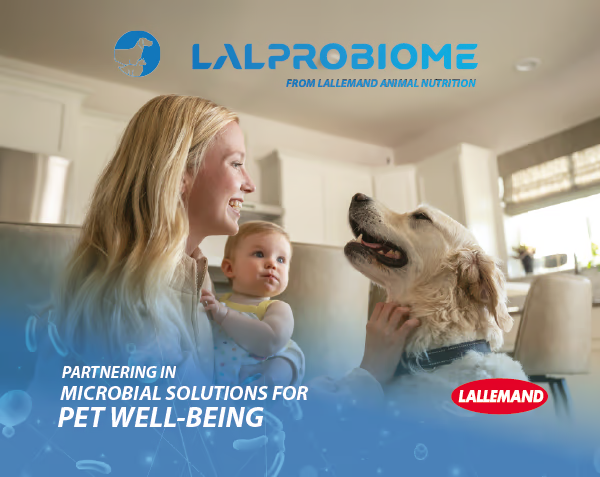 Preservatives
Preservatives
2+ MIN
28/04/2025
Support Companion Animal Health & Your Brands with Premium LALPROBIOME Solution
Why choose LALPROBIOME? In today's pet food and supplement market, health-conscious consumers want more than just basic nutrition for their furry family members—pet parents seek scientifically backed, high-performance solutions that can help their pets leading longer, happier and healthier lives. That's where LALPROBIOME's cutting-edge microbial and antioxidative solutions can offer your products a competitive advantage. LALPROBIOME from LALLEMAND ANIMAL NUTRITION is backed by the LALLEMAND group's 160+ years of experience using fermentation to produce yeast and bacteria, global production facilities, and research-driven innovation. Our expertise can help you find the right microbial strain for the right application. We fully control our production process from the lab to packing to ensure the optimal efficacy of our yeast and bacteria based solutions. LALPROBIOME solutions can elevate and differentiate your brands with novel ingredients promoting unique and specific benefits in four categories: Postbiotic yeast Postbiotic bacteria Probiotic yeast & bacteria Antioxidative solutions LALPROBIOME's research strengths focus on three vital areas of nutritional support. Used alone or in combination, our solutions can help promote and maintain health for dogs and cats by: Optimizing the microbiota balance to aid digestion and strengthen gut barrier integrity. Reinforcing immune response using solutions with well-recognized and specific immunodulatory properties. Protecting against free radicals by helping better cope with oxidative stress. A Way to Lead in a Competitive Market Market research shows that people are improving their companion animals' environments, diets and medical care in an effort to increase longevity and well-being. Just as they are prioritizing their own health and nutrition, they want high-quality, functional and natural ingredients in the pet food, treats, and supplements they serve their companions. LALPROBIOME microbial and antioxidative solutions match consumers' current and future priorities by offering benefits for digestive care, immune support, and antioxidant and nutritional optimization—including skin, coat, and oral care—which makes them a must-have for dog and cat pet food manufacturers. Including LALPROBIOME solutions in your brands' formulations offers the market advantages of years of science-backed innovation, consistent quality, processing compatibility and customer support that is a leader in companion animal nutrition. Shaping the Future of Companion Animal Nutrition LALLEMAND ANIMAL NUTRITION's dedicated companion animals platform, LALPROBIOME, is working to help maintain companion animal nutrition and well-being with selected microbial and antioxidative solutions. As pet owners become more discerning, pet food, treat, and supplement manufacturers must stay ahead with cutting-edge, research-backed LALPROBIOME probiotics, postbiotics, and antioxidative solutions. At LALLEMAND, we're with you every step of the way, from selecting the right functional ingredient for your formulation, to ensuring efficacy through manufacturing and packaging, to addressing market trends. By partnering with LALLEMAND, you're enhancing your product line and contributing to the health and well-being of animals. Position your brands for future success—partner with LALLEMAND today. Source: Lallemand
 Other microingredients
Other microingredients
8+ MIN
20/12/2024
Protein digestibility kinetics: A key criterion for discriminating between protein sources in pet food (Part 2)
Hydrolyzed yeasts: A source of highly digestible and quickly absorbed proteins
Yeast is an incredible bioengineering factory and a source of valuable nutrients and functional molecules.
At Lallemand, thanks to our extensive yeast expertise, we have spent years working on the screening of different yeast biomasses and on the optimization of their production processes, both of which led to the development of YELA PROSECURE.
YELA PROSECURE is a specifically designed hydrolyzed yeast that offers highly digestible and functional nutrients supporting animal performance, digestive health and feed appetibility while contributing to the feed-protein balance.
YELA PROSECURE: Kinetics of protein digestibility
YELA PROSECURE's kinetics of protein absorption have been analyzed with an adaptation of the Boisen standard method (Figure 4). The pH during the gastric phase, initially at 2.0, was adjusted at 4.5 to be more in line with the real situation observed in young animals where the digestive tract is not yet mature and gastric enzymes are not at their maximal efficacy, leading to a higher pH.
YELA PROSECURE's protein digestibility starts at 77% at the beginning of the intestinal phase (right after the stomach) to 94% after 48 hours. Moreover, YELA PROSECURE is close to its maximum in vitro digestibility after 3 hours of intestinal digestion meaning 90.5% of the protein content of YELA PROSECURE has flash and fast digestibility kinetics and only 9.5% is slow and resistant. The proteins from YELA PROSECURE are, therefore, highly bioavailable for the animals.
Hydrolized yeasts: What are we talking about?
Hydrolyzed yeasts are obtained through yeast cell digestion by both endogenous and exogenous enzymes that are added during the production process to obtain the desired level of lysis. Proteins and nucleic acids are fragmented into small size peptides through a controlled process, which also ensure a high level of functional ingredients and consistency in terms of composition.
EFFECT OF YEAST PROCESSING ON THE KINETICS OF PROTEIN DIGESTIBILITY
The protein digestibility kinetics of YELA PROSECURE was compared to a whole-cell inactivated yeast (Figure 5) with a focus on the three first hours of the intestinal phase since the process of digestion is almost complete by then for Young animals.
In whole-cell inactivated yeasts, no lysis process is applied, and most nutrients (including the proteins) are retained in the cytoplasm of the yeast cell making them less accessible. As shown in Figure 5, their protein digestibility is low right after the stomach (46%) and increases slowly, up to 60% after 3 hours.
In comparison, YELA PROSECURE — a hydrolyzed yeast — has 77% protein digestibility after the stomach and more than 90% after 3 hours within the intestinal phase. Due to the oriented and controlled hydrolysis process, proteins and nucleic acids are fragmented into small size peptides offering highly digestible nutrients. We can conclude the yeast lysis process strongly benefits protein digestibility and therefore nutrient bioavailability in the gut.
YELA PROSECURE PROTEIN DIGESTIBILITY COMPARED TO FIVE OTHER FEED MATERIALS
YELA PROSECURE, a yeast-based product, fish meal, soybean meal, potato protein concentrate and few other feed materials were assessed for protein digestibility and kinetics of absorption based on the Boisen method with an adjustment to the gastric pH as previously explained (Figure 6 and Figure 7).
Protein sources are absorbed differently by animals right after the stomach phase:
YELA PROSECURE's well controlled hydrolysis process makes the protein highly available and quickly absorbed. With a protein digestibility of 77% right after the stomach, we can define YELA PROSECURE as having flash digestibility.
Fish meal has a digestibility pattern of between 56 to 61%. Soybean meal and whole-cell inactivated yeast have a lower protein digestibility at the beginning of the intestinal phase, with 49% and 46% respectively, while the potato protein concentrate is around 40% digestibility.
Did you know? Flash digestibility is important for young animals, especially as their gut is not yet mature and still not able to easily absorb and utilize protein fractions from the diet. Supplying young animals with a flash digestible protein source that is rich in free amino acids and small peptides will help them easily absorb and use those nutrients.
Figure 7 shows that the digestibility kinetics of protein is specific to different feed materials:
Soybean meal protein digestibility increases up to 70% after 3 hours of the intestinal phase.
The kinetics of protein digestibility for fish meal is between YELA PROSECURE and soybean meal, starting with 56% digestibility after the stomach, increasing to 81% after 3 hours in the intestine.
The potato protein concentrate appears to have a slower protein digestibility kinetic over time (52% after 3 hours of the intestinal phase). Being rich in crude protein (77%), the potato protein concentrate will contribute to a high amount of non-digested protein in the animal gut.
Compared to these feed materials, YELA PROSECURE shows interesting kinetics of protein digestibility with more than 90% of the protein digested after 3 hours of the intestinal phase.
As a result, there is a negligeable amount of non-digested protein which reaches the lower gut. YELA PROSECURE is therefore, a valuable protein source which can help reduce the risk of gut dysbiosis associated with non-digested protein. In addition, flash and fast protein digestibility is important in terms of protein functionality with direct and indirect benefits for the animals.
Palatability in Pet food
Some free amino acids are also involved in the mechanism of taste and eating behavior including feed intake, therefore playing a role in palatability.
The comparison of average daily feed intake of dogs with YPS diet to dogs with Control diet (Figure 8) shows that the consumption of the YPS diet was significantly higher than the Control diet.
MATERIAL & METHODS
Duration: 4 days
Animals: 2 groups (Control and YPS) of 20 adult medium size dogs
Diet: premium dry petfood
Control - coated with 1% premium digest
YPS - coated with 1% YELA PROSECURE
YELA PROSECURE has shown the potential to enhance petfood palatability, likely related to the high natural content in specific free amino acids.
Conclusion
To meet growing pet food market demand — and to face the current challenges around global health and digestive care of pets — petfood manufactures and nutritionists are looking for alternative functional protein sources. Hydrolyzed yeasts are a promising and innovative functional protein source to consider, mainly due to the free amino acids and the small peptides obtained from the cracking (lysis) process of the protein. When the hydrolysis process is controlled, yeast has a standardized profile of free amino acids, which plays a positive role in the maintenance of pet gut health, contributing to the petfood protein balance and enhancing palatability. This is particularly of interest when applied to the diets of junior animals or in specialty petfood such as hypoallergenic diets.
By: Francesca Susca -Global Pet Product Manager- and Lisa Saibi -Product manager Yeast derivatives & antioxidants-.
Source: Lallemand Animal Nutrition
References
Boisen S., 1991. A model for feed evaluation based on in vitro digestible dry matter and protein. In:M.F. Fuller (Editor), In Vitro Digestion in Pigs and Poultry. Commonwealth
Agricultural Bureaux International, Slough, pp. 135-145.
Boisen S. and Eggum B.O., 1991. Critical evaluation of in vitro methods for estimating digestibility in simple-stomach animals. Nutr. Res. Rev., 4: 14 1 - 162.
Boisen S., Fernández J.A., 1995. Prediction of the apparent ileal digestibility of protein and amino acids in feedstuffs and feed mixtures for pigs by in vitro analyses. Animal Feed Science and Technology, Volume 51, 29-43.
Cone J.W. and van der Poel A.F.B., 1993. Prediction of apparent ileal digestibility in pigs with a two-step in-vitro method. J. Sci. Food Agric., 62: 393-400.
Duan Y, Tan B, Li J, Liao P, Huang B, Li F, Xiao H, Liu Y, Yin Y. Optimal branched-chain amino acid ratio improves cell proliferation and protein metabolism of porcine enterocytesin in vivo and in vitro. Nutrition. 2018 Oct;54:173-181. doi:10.1016/j.nut.2018.03.057. Epub 2018 Apr 24. PMID: 30048883.
Furuya S., Sakamoto K. and Takahashi S., 1979. A new in vitro method for the estimation of digestibility using the intestinal fluid
Gao J, Yin J, Xu K, Li T, Yin Y. What Is the Impact of Diet on Nutritional Diarrhea Associated with Gut Microbiota in Weaning Piglets: A System Review. Biomed Res Int. 2019
Dec 26;2019:6916189. doi: 10.1155/2019/6916189. PMID: 31976326; PMCID: PMC6949732.
Graham H., Liiwgren W. and Aman P., 1989. An in vitro method for studying digestion in the pig. 2. Comparison with in vivo ileal and faecal digestibilities. Br. J. Nutr., 61: 689-698.
Jayaraman B., 2019. Evaluation of standardized ileal digestible threonine to lysine ratio and tryptophan to lysine ratio in weaned pigs fed antibiotic-free diets and subjected to immune challenge. A Thesis Submitted to the Faculty of Graduate Studies, University of Manitoba http://hdl.handle.net/1993/34498.
McGilvray W.D., Wooten H., Rakhshandeh A.R., Petry A., Rakhshandeh A., 2019. Immune system stimulation increases dietary threonine requirements for protein deposition in growing pigs. Journal of Animal Science, Volume 97, Issue 2, 735–744, https://doi.org/10.1093/jas/sky468.
Metz S.H.M. and van der Meer J.M., 1985. Nylon bag and in vitro technique to predict in vivo digestibility of organic matter in feedstuffs for pigs. In: A. Just, H. Jorgensen and
J.A. Fernandez (Editors), Digestive Physiology in the Pig. National Institute of Animal Science, Denmark, Report no. 580, pp. 373-376.
OECD/FAO, 2021. OECD-FAO Agricultural Outlook 2021-2030, OECD Publishing, Paris, https://doi.org/10.1787/19428846-en.
Pisante M., Stagnari F., A. Grant C., 2012. Agricultural innovations for sustainable crop production intensification. Italian Journal of Agronomy 2012; volume 7:e40
Taverner M.R. and Farrell D.J., 1981. Availability to pigs of amino acids in cereal grains. 3. A comparison of ileal availability values with faecal, chemical and enzymatic estimates. Br. J. Nutr., 46:173-180.
Trevisi P., Melchior D., Mazzoni M., Casini L., De Filippi S., Minieri L., Lalatta-Costerbosa G., Bosi P., 2009. A tryptophan-enriched diet improves feed intake and growth performance of susceptible weanling pigs orally challenged with Escherichia coli K88. J Anim Sci.;87(1):148-56. doi: 10.2527/jas.2007-0732. Epub 2008 Sep 12. PMID: 18791156.
Trevisi P., Corrent E., Messori S., Formica S., Priori D., Bosi P., 2012. Supplementary tryptophan downregulates the expression of genes induced by the gut microbiota in healthy weaned pigs susceptible to enterotoxigenic Escherichia coli F4. Livestock Science 147, 96-103.
Trevisi P., Corrent E., Mazzoni M., Messori S., Priori D., Gherpelli Y., Simongiovanni A., Bosi PI, 2015. Effect of added dietary threonine on growth performance, health, immunity and gastrointestinal function of weaning pigs with differing genetic susceptibility to Escherichia coli infection and challenged with E. coli K88ac. Journal of
Animal Physiology and ANimal Nutrition. Vol. 99 Issue . 511-520. https://doi.org/10.1111/jpn.12216.
Wu G., and Knabe D.A., 1995. Arginine synthesis in enterocytes of neonatal pigs. American Journal of Physiology. https://doi.org/10.1152/ajpregu.1995.269.3.R621.
Wünsche J., Herrman II., Meinl M., Hennig U., Kreienbring F. and Zwierz P., 1987. Einfluss exogener Faktoren auf die prazlkale Nlhrstoff- und aminosiurenre-sorption, ermittelt an Schweinen mit Ileo-Rectal-anastomosen. Tierernaehrung, 37: 745-764.
 Other microingredients
Other microingredients
3+ MIN
16/12/2024
Protein digestibility kinetics: A key criterion for discriminating between protein sources in pet food (Part 1)
Introduction
The search for innovative protein sources is on the rise as a result of increasing global food consumption and consumer concerns about sustainability, animal welfare, and strain on agricultural land. In line with the humanization trend, pet owners are likely to select a pet food based on their own dietary preferences. Moreover, the increased awareness of the importance of proper nutrition has led pet owners to become more and more careful when looking at pet food labels. Clean label is amongst the top trends in the pet food market and seems to be driven by the perceived link between health and naturalness. Consequently innovative protein sources are of great interest in the Pet Industry as a way to meet the growing market demand for pet nutrition.
Proteins: The importance of digestibility and absorption kinetics
Proteins are biological macromolecules made up of amino acids. Protein bioavailability is strongly related to its amino acid composition, size, and mass range. Big proteins, proteinassociated molecules and nucleic acids have lower digestibility compared to free amino acids and small peptides, which have been exposed to a multiple nitrogen hydrolysis process that makes them more bioavailable (Figure 1).
The digestion process is complex. It is driven by enzymatic activities and is pH dependent. In monogastric animals, this process starts in the stomach where protein denaturation occurs due to pepsin activation. In the duodenum, pancreatic and intestinal wall enzymes continue the digestion process, breaking down the proteins. The absorption of amino acids, dipeptides and tripeptides occurs in the jejunum. The large intestine is the site of microbial fermentation, where short chain fatty acids (SCFA) are produced.
Supplying animals with a protein source that is already processed and rich in free amino acids and small peptides helps ensure better absorption in the gut.
Protein digestibility of feed materials is an important factor for nutritionists, but it does not reflect the timing of absorption in the gut. The kinetics of protein absorption should be considered in addition to protein digestibility. It allows nutritionists to properly assess the quality of the protein source. Many properties and functionalities of proteins are related to their absorption kinetics. The kinetics of protein absorption helps categorize the protein fraction according to the speed of absorption. Four categories can be defined as flash, fast, slow and resistant along the digestive tract (Figure 2).
Did you know? Indigestible proteins are used as a substrate for undesirable bacteria in the gut, inducing proteolytic fermentation.
Ultimately, it may lead to diarrhoea due to microbiota dysbiosis (Jung Gao et al., 2019). Therefore, the higher the protein digestibility, the greater the protein source for animals from a digestive standpoint.
Kinetics of protein absorption: How is it measured?
Several in vitro methods simulating the digestive processes have been developed to estimate the protein digestibility and the kinetics of absorption.
For example, the Boisen standard method (Boisen and Fernandez, 1995) is very accurate in measuring in vitro protein digestibility, which is calculated from the difference between nitrogen in the raw material sample and undigested residue measured at different time points of the intestinal pase (Figure 3).
Did you know? In most cases, validation of the methods is based on the relationship between in vitro results and values of apparent digestibility at the fecal or ileal level (Furuya et al., 1979; Metz and van der Meer, 1985; Graham et al., 1989; Cone and van der Poel, 1993). However, endogenous losses of proteins at the ileal level might have a great influence on in vivo digestibility while in vitro digestibility reflects the real digestibility of proteins and amino acids (Boisen and Eggum, 1991). Since in vitro digestibility does not take into account endogenous losses, the apparent ileal digestibility can only be predicted accurately from in vitro measurements, after correcting for the endogenous losses.
These losses may be influenced by a variety of factors, especially the fiber content in the diet (Taverner and Farrel, 1981; Wünsche et al., 1987). Alternatively, a considerable part of this variation may be explained by the amount of undigested dry matter at ileal level (Boisen, 1991).
By: Francesca Susca -Global Pet Product Manager- and Lisa Saibi -Product Manager Yeast derivatives & antioxidants
Source: Lallemand Animal Nutrition
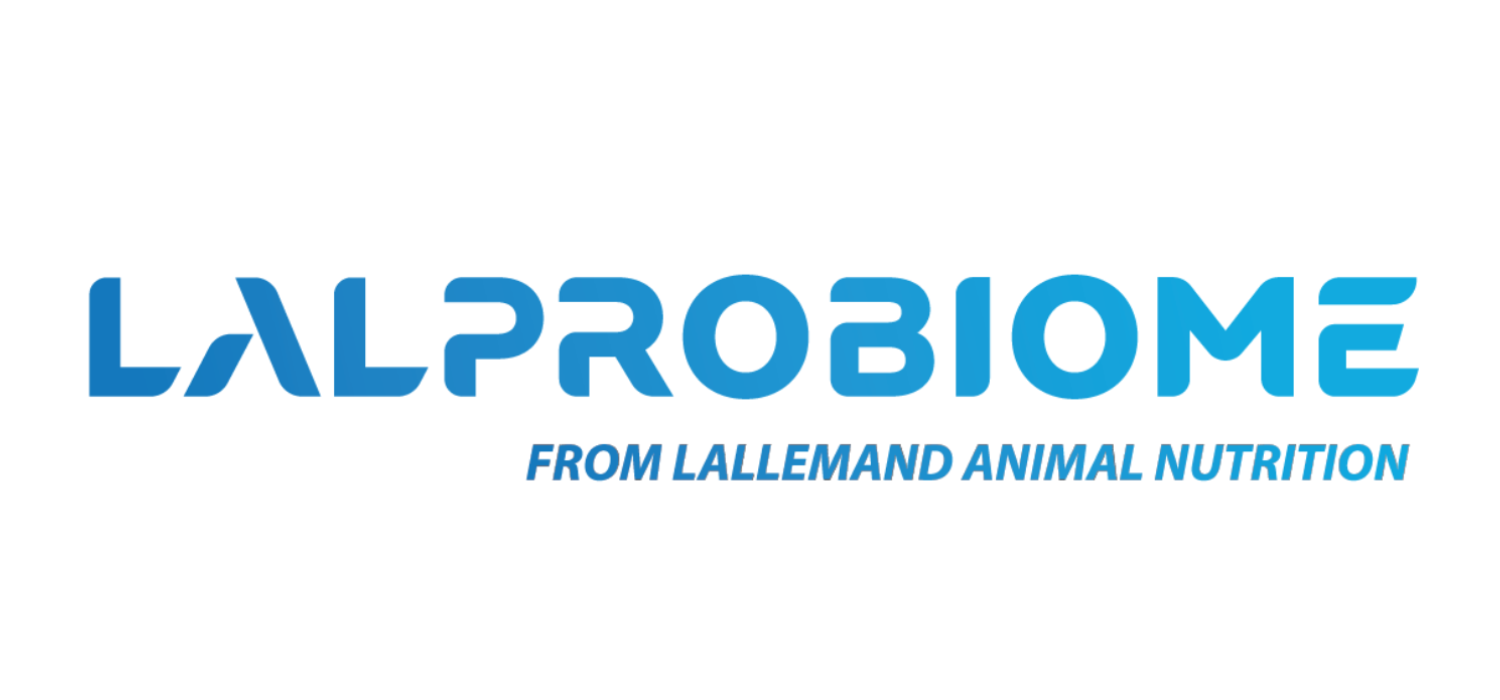 Preservatives
Preservatives
2+ MIN
05/12/2024
LALPROBIOME, the Lallemand Animal Nutrition’s platform for Pet well-being
BLAGNAC, FRANCE – December, 2024 – Lallemand Animal Nutrition is proud to introduce you to LALPROBIOME, its platform of innovative microbial solutions tailored for pets. The brand offers a broad range of yeast and bacteria-based solutions including prebiotics, probiotics, postbiotics and antioxidative solutions. From digestive care to immune support, antioxidant optimization to cognitive function, LALPROBIOME offers a broad range of specific solutions allowing for petfood, treat, and supplement customization and differentiation.
Dr. Francesca Susca, Global Pet Category Manager, explains: 'Our company is a global leader in the selection and application of microbial strains to address nutrition and well-being of human and animals. We've capitalized on this legacy to bring LALPROBIOME to the petfood market. LALPROBIOME leverages the natural power of yeast and bacteria with cutting edge science to support pet health and well-being.'
She added: 'We understand that every business is unique, which is why we're thrilled to offer LALPROBIOME. This gives our customers the ability to elevate and differentiate their brands with novel ingredients that support unique and specific benefits. LALPROBIOME products have been exhaustively tested for safety and efficacy, providing customers with proven, healthy products.'
Lallemand's LALPROBIOME solutions can bring benefits such as:
Digestive care
Immune support
Antioxidant optimization
Nutritional optimization
Palatability
Well-being (gut-brain axis)
About Lallemand Animal Nutrition
Partnering in microbial solutions for a changing world
We are Lallemand Animal Nutrition – a global leader in the science of fermentation – and a primary producer of yeast and bacteria. Our passion is harnessing microorganisms to optimize animal well-being and performance, forage management, and the animal environment. We remain unwavering in our commitment to helping our industry partners and farmers sustainably feed a growing global population through improved animal performance – and enhancing the well-being of livestock & companion animals.
We provide the broadest range of innovative microbial products, services and solutions for customers around the world.
We deliver tailor-made services according to your specific needs and offer expert technical support to ensure the optimal application and efficacy of our solutions.
Leveraging the natural power of yeast and bacteria, we develop, produce and market highly technical products including probiotics, silage inoculants, and microbial derivatives. Using sound science, proven results and knowledge from experience, we apply the right strains for the right applications.
Lallemand Animal Nutrition is Specific for your Success!
For more information, please visit https://lalprobiome.lallemandanimalnutrition.com
Connect with us at [email protected]
Not all products are available in all markets nor associated claims allowed in all regions.
Source: Lallemand Animal Nutrition



